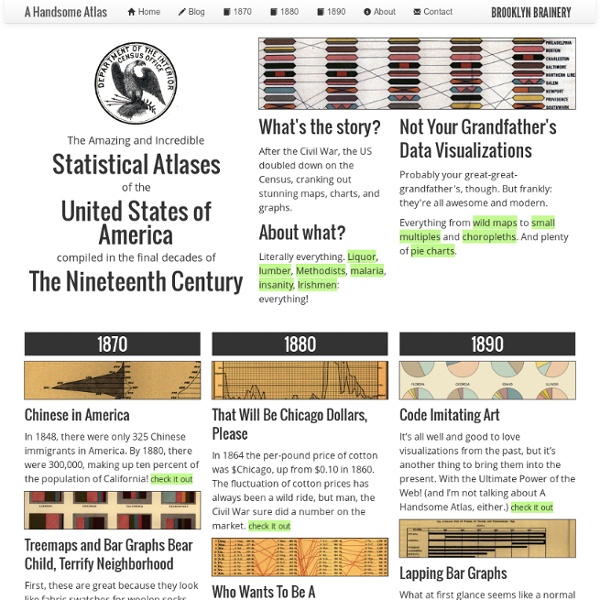



10 significant visualisation developments: July to December 2012 To mark the milestone of each mid-year and end of year I try to take a reflective glance over the previous 6 months period in the data visualisation field and compile some of the most significant developments. These are the main projects, events, new sites, trends, personalities and general observations that have struck me as being important to help further the development of this field. Earlier this year I published this collection for the first 6 months of 2012 and now I’d like to mark the end of 2012 with my latest perspective. I look forward to hearing from you with suggestions for the developments you believe have been most significant. And so, as ever, in no particular order… 1. If there is one name that has dominated the design side of the field over these past few months it would have to be Santiago Ortiz. 2. 3. I’ve tweeted a few times about Simon whose work I first came across at the Malofiej 20 event. 4. 5. 6. 7. 8. 9. 10. Special mentions… December 18th, 2012 in collections
MUSIC DATA SCIENCE Software Genomic rearrangements can cause disease and are implicated in many cancers. Being able to see the patterns in these changes across samples and patients is important. In the review article End-joining, Translocations and Cancer, Bunting and Nussenzweig demonstrate how compositing the genome circularly adds value and clarity to the presentation. Bunting SF, Nussenzweig A 2013 End-joining, translocations and cancer Nat Rev Cancer Răzvan Musăloiu-E. explored the Linux file system and used Circos to relate the systems (disk-based, optical mediums, flash-based, network-based, cluster-based, memory-based, ancient) to kernel symbols. Jonathan Feinberg (IBM) created this perfectly circular wordle for me, using content from the Circos site. Visualizing large networks is hard. Circular data tracks naturally support display of information at various resolutions. First, understand the requirements. Download and install the software, then follow the tutorials. Having trouble?
[Brands] GE | Making Data Work GE Works. Building, Moving, Powering and Curing the world. In the process, our technologies are generating data on a petabyte scale. This data contains valuable information that will drive insights, innovations, and discoveries, but it can be difficult to access and digest. Using data visualization, we’re pairing science and design to simplify the complexity and drive a deeper understanding of the context in which we operate. Check out our latest video. We encourage you to explore the projects below. For further information about GE’s data visualization program, please contact us at datavizinfo@ge.com To share your own visualizations, please visit www.visualizing.org
The Functional Art: An Introduction to Information Graphics and Visualization The unofficial homepage of Tim Dwyer I have a new position: Senior Lecturer and Larkins Fellow at Monash University, Australia. Dissertations Tim Dwyer (2005): "Two and a Half Dimensional Visualisation of Relational Networks", PhD Thesis, The University of Sydney. (23MB pdf) Tim Dwyer (2001): "Three Dimensional UML using Force Directed Layout", Honours Thesis, The University of Melbourne (TR download) Technical Reports T. T. [Brands] Spotify Insights Urbanscale | Design for networked cities and citizens La visualisation analytique, pour comprendre des données complexes Depuis une dizaine d’années, nous sommes entrés dans une nouvelle période : celle de la profusion de données. La visualisation analytique est une méthode qui utilise les capacités visuelles humaines pour accélérer l’exploration de ces quantités importantes de données. Pourquoi a-t-on besoin d’utiliser les capacités visuelles ? Projet européen VisMaster. Auteurs scientifiques : Fanny Chevalier, Jean-Daniel Fekete – Réalisation : Christian Blonz Visionner la vidéo – Durée : 07 min 39 s – Voir les différentes versions. 1. Nous disposons aujourd’hui de quantités de données considérables, en conséquence de trois phénomènes : Ces nouvelles opportunités changent les perspectives scientifiques et industrielles. Par exemple, dans les années 1990, les biologistes ont lancé le projet de séquençage du génome humain. De nos jours, les données sont déjà disponibles et en quantités bien plus importantes qu’auparavant. Une représentation efficace Une explication cognitive 2. Un système de recherche dynamique
[Brands] Pornhub Insights